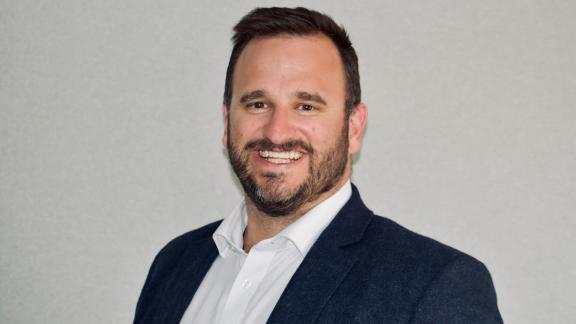What will it take for primary care to lead in neighbourhoods?

If primary care is to take a leading role in neighbourhood working, we must be more deliberate in defining what that means and in building the infrastructure to sustain it, writes Dr Duncan Gooch.
A few weeks ago, we found ourselves reflecting on the evolving role of primary care in shaping integrated neighbourhood working. It wasn’t a conversation fuelled by despair, it was one grounded in realism but also in admiration for the exceptional practice emerging across the country. Across the system, there are brilliant examples of primary care teams innovating, collaborating and anchoring their communities. Whether it’s a primary care network (PCN) co-producing services with local VCFSE (voluntary, community, faith and social enterprise) groups, federations running urgent care centres, or leaders stepping into system roles with clarity and humility—this is a sector that continues to adapt and lead. But momentum alone isn’t enough. If primary care is to take a leading role in neighbourhood working, we must be more deliberate in defining what that means and in building the infrastructure to sustain it.
Redefining the neighbourhood
But for all the ambition, ‘neighbourhood’ is a term that still lacks universal understanding.
For me, neighbourhoods are defined by three things:
- A geography. That is, a clear and bounded population.
- A way of working grounded in the social ecological model of health, which is an approach that recognises the broader determinants of wellbeing: employment, education, housing, community connection.
- Multiple providers. A neighbourhood is not a rebadged PCN or a siloed NHS initiative. It must include health, local government, the voluntary sector and, crucially, the communities themselves.
This definition matters. It helps us avoid conflating neighbourhood with either ‘mini place’ or ‘primary care’, and instead positions it as a collaborative, place-based model of care that requires shared ownership and shared leadership.
What primary care at scale can offer
So, through discussions and reflection, I see four key domains that primary care at scale can bring to the neighbourhood table:
- Integration infrastructure: The nuts and bolts—leadership, governance, finance, and data—that allow primary care to connect meaningfully with other partners.
- Transformation capability: The ability not just to deliver care, but to shape and improve whole pathways. Many teams are already doing this, modelling integrated long-term condition management, redesigning access, leading on proactive care.
- Direct delivery (where appropriate): Particularly in areas like out of hours, urgent treatment, or referral management, primary care providers are often best placed to deliver responsive and joined-up services.
- Quality improvement infrastructure: Addressing unwarranted variation, supporting prevention, and offering stabilisation support for practices under pressure.
The key is that these functions only have impact if they are owned and led by primary care. We’ve seen too many attempts to ‘integrate’ that bypass the very people delivering the care. That doesn’t work. Buy-in is not a courtesy, it’s the difference between impact and inertia.
The challenge of leadership
Where the conversation gets trickier is leadership. Not because we lack talented, committed leaders, but because we haven’t always built the conditions for leadership to thrive.
"When competition overrides cooperation, or when organisational survival trumps shared purpose, it weakens our collective ability to influence"
Too often, conversations about leadership in primary care default to operational updates or performance metrics. The space for systems thinking, reflective challenge and authentic collaboration gets crowded out.
More damaging still is the occasional intra-professional undermining that can emerge under stress. When competition overrides cooperation, or when organisational survival trumps shared purpose, it weakens our collective ability to influence.
But here too, I’ve seen change. I’ve watched PCN clinical directors grow into confident system influencers. I’ve seen federations evolve from single-issue vehicles to sophisticated providers of urgent care, QI and education. I’ve seen advisory groups across the Confed platform create space for voice and contribution.
Framing change through COM-B
To understand how we might support primary care to lead more effectively, I find the COM-B model of behaviour change a useful lens: capability, opportunity, motivation.
Capability involves systems thinking, strategic leadership and influencing across boundaries. At Confed, we’re trying to role model this in how we show up, and in the development offers we co-create.
Opportunity comes from creating real agency and room for diverse voices to shape strategy. Advisory groups, working groups and national leadership platforms are only valuable if they can achieve this. Structures matter.
Motivation is perhaps most important. People need to feel connected to the purpose, but also that their contribution is recognised and resourced. Leadership takes time, energy and emotional labour. it must be treated as legitimate work, not a voluntary extra.
A moment of possibility
This is not a moment of fragmentation, it’s a moment of possibility. Primary care is already leading in many neighbourhoods, but we need to consolidate and support that leadership, not assume it. We need to understand the structures that enable it, the behaviours that nurture it, and the language that connects it to wider purpose. If we do that, we don’t just future-proof primary care, we allow it to thrive as a cornerstone of integrated, local and compassionate care.
And in doing so, we help neighbourhoods move from concept to reality.
Dr Duncan Gooch is a GP and clinical director of Erewash Health Partnership, and chair of the NHS Confederation’s Primary Care Network. You can connect with Duncan on LinkedIn



